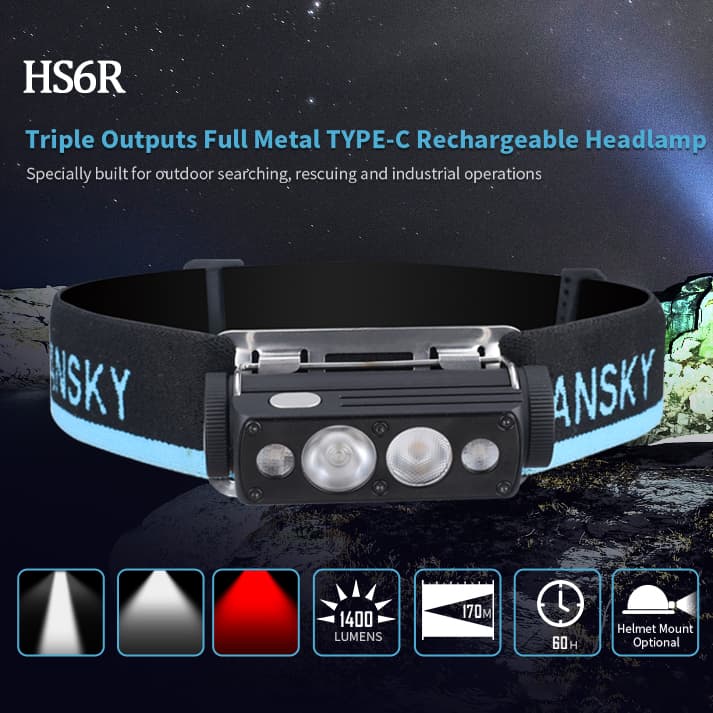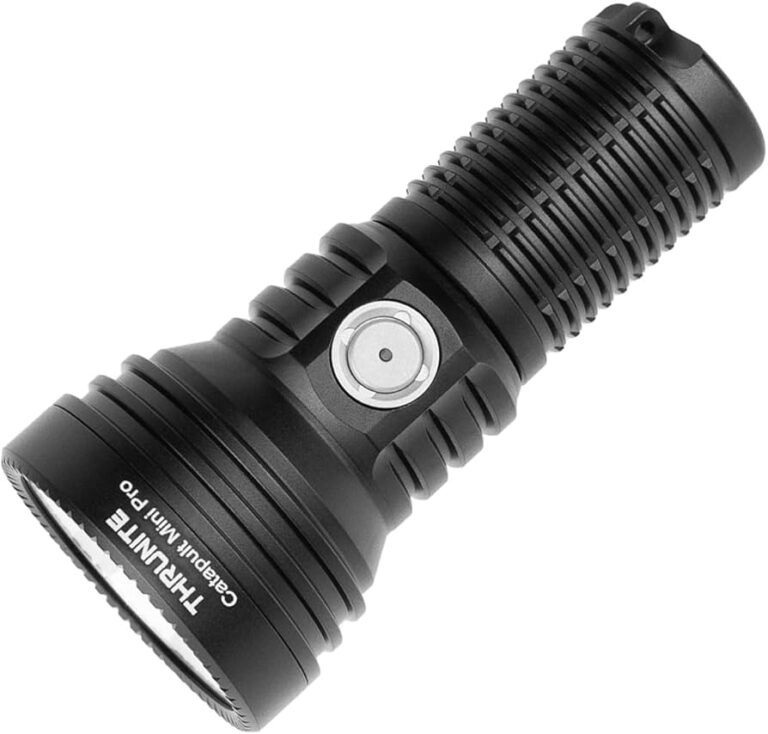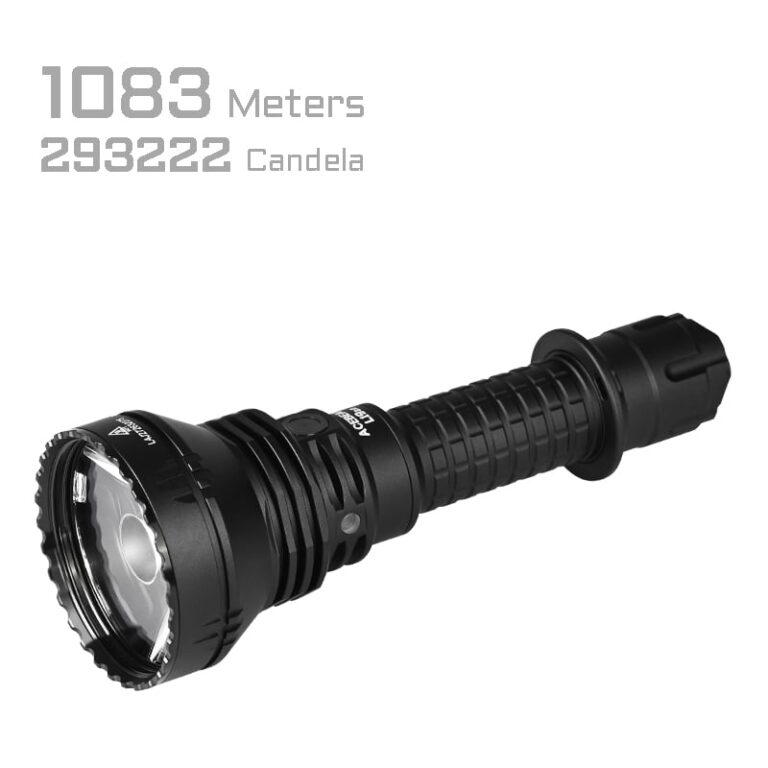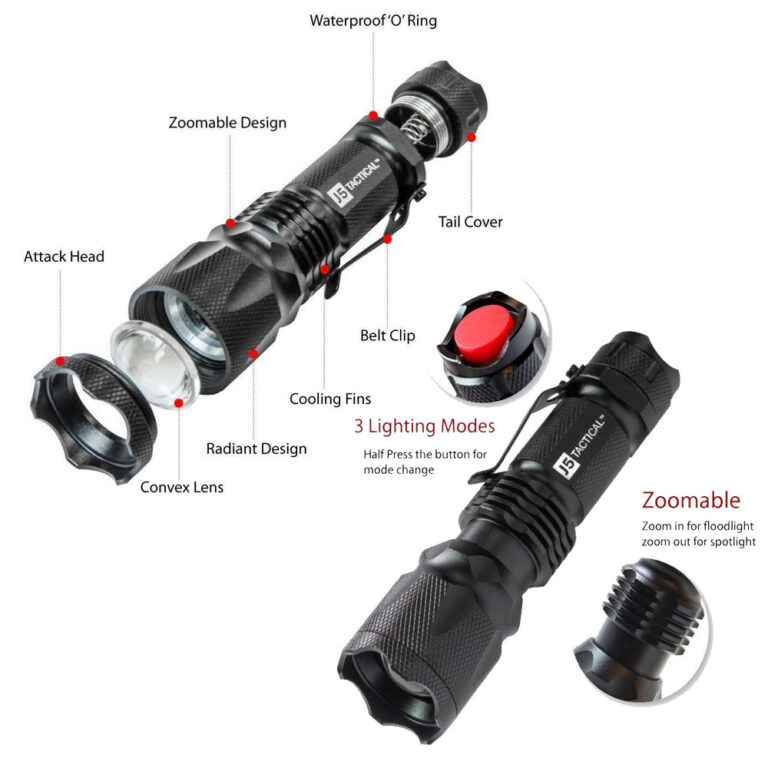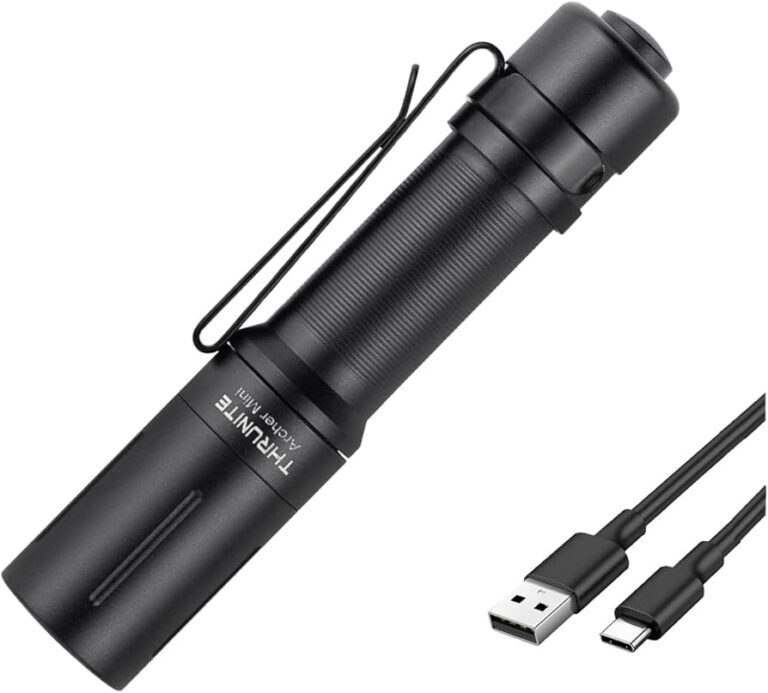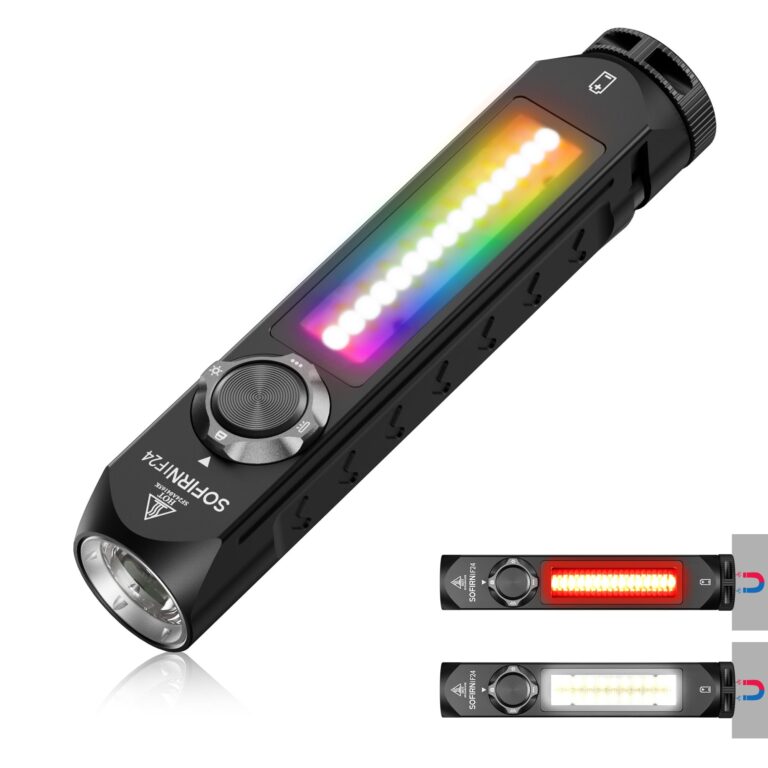How to Choose a Flashlight: A Comprehensive Guide
In today’s world, a reliable flashlight is an essential tool for various tasks, from everyday household use to outdoor adventures and emergency situations. With an array of options on the market, selecting the right flashlight can be overwhelming.
This article aims to simplify the decision-making process by providing a detailed guide on how to choose a flashlight based on your specific needs. We’ll explore key features such as brightness measured in lumens, types of beams, battery options, durability, and additional functionalities.
By the end, you will be equipped with the knowledge needed to make an informed choice tailored to your requirements.
Table of Contents
- Understanding Brightness and Lumens
- Types of Beam Patterns
- Battery Types: Rechargeable vs. Disposable
- Durability and Build Quality
- Special Features to Consider
- Choosing the Right Size and Style
- Budget and Value Considerations
- FAQ SECTION
- Conclusion
Understanding Brightness and Lumens
The brightness of a flashlight is a crucial factor that impacts its usability. Brightness is typically measured in lumens, which quantifies how much light is emitted from the flashlight.
Understanding lumens can help you choose a flashlight that meets your specific requirements for various activities.
What are Lumens?
Lumens (lm) measure the total light output of a flashlight. Essentially, the higher the lumen count, the brighter the light.
For example, a flashlight emitting 300 lumens is significantly brighter than one that produces 30 lumens. It’s important to note that while higher lumens indicate greater brightness, they also affect battery life.
Ideal Lumen Levels for Various Uses
Choosing the right lumen level depends on how you plan to use the flashlight. Here’s a guide:
| Lumen Range | Distance | Best For |
|---|---|---|
| 1-30 | Up to 10 meters | Indoor tasks, reading |
| 31-100 | Up to 30 meters | Outdoor activities, walking at night |
| 101-400 | 30-100 meters | Campsite lighting, hiking |
| 401-1000 | 100-200 meters | Search and rescue, hunting |
| 1000+ | 200+ meters | Professional use, extreme outdoor activities |
This table illustrates how different lumen levels cater to specific needs. For instance, everyday tasks can be efficiently handled with flashlights emitting between 1 to 100 lumens, while outdoor adventures or emergency situations may require flashlights with a higher lumen output.
Understanding these ranges can assist in making an informed choice based on your activities.
Impact of Lumens on Battery Life
A critical point to consider is that higher lumens can lead to faster battery consumption. Flashlights with a high lumen output may drain their batteries quicker, especially if used at maximum brightness for extended periods.
Therefore, it’s advisable to consider your usage patterns when selecting a flashlight, opting for adjustable brightness settings to extend battery life.
Types of Beam Patterns
The beam pattern of a flashlight significantly affects its performance and suitability for different tasks. Understanding the types of beam patterns available can help you choose a flashlight that meets your specific needs.
Flood Beams: Best Uses
Flood beams are designed to illuminate a wide area, making them ideal for activities such as camping, where you need to light up a large space. These beams disperse light broadly, offering even illumination without focusing on a single point.
This feature is particularly useful for setting up tents or cooking outdoors.
Spot Beams: When to Use
Spot beams, in contrast, concentrate light into a narrower beam that can reach longer distances. They are beneficial for activities that require long-range visibility, such as search and rescue operations or hiking at night.
A flashlight with a spot beam can effectively illuminate objects far away, but it may not provide adequate lighting for close-range tasks.
Adjustable Beam Options
Some flashlights offer adjustable beam settings, allowing users to switch between flood and spot beams as needed. This versatility can enhance the flashlight’s usability across various situations, making it a valuable feature to look for when making a purchase.
| Beam Type | Application | Description |
|---|---|---|
| Flood Beam | Campsite lighting | Wide spread for larger areas |
| Spot Beam | Off-road lighting | Narrow focus for long-range lighting |
This table highlights the differences between flood and spot beams, illustrating their specific applications. A flood beam is ideal for general campsite lighting, while spot beams are tailored for off-road or long-distance visibility.
Understanding these applications can help users select a flashlight that best matches their intended use.
Battery Types: Rechargeable vs. Disposable
The power source of your flashlight is a crucial consideration that can affect its performance and convenience. Flashlights typically use either rechargeable or disposable batteries, each with its own set of advantages and disadvantages.
Rechargeable Batteries: Benefits and Downsides
Rechargeable batteries, such as lithium-ion and nickel-metal hydride (NiMH), offer long-term cost savings and sustainability. They can be charged multiple times, which makes them ideal for frequent use.
However, rechargeable flashlights require access to a power source, which may not always be available, especially during emergencies.
Disposable Batteries: When to Use
Disposable batteries are easy to replace and can be stored for extended periods without losing power. They are ideal for occasional use or in situations where recharging may not be feasible, such as during power outages.
However, they can become costly over time if the flashlight is used frequently.
Battery Life and Performance
When selecting a flashlight, consider battery life and performance based on your usage patterns. Rechargeable flashlights typically offer longer runtimes when used on lower settings, while disposable batteries may provide better performance in extreme conditions.
Understanding these differences can help you choose the best power source for your flashlight needs.
| Battery Type | Averages Lifespan | Best Use Case |
|---|---|---|
| NiMH Rechargeable | 3-5 years | Frequent use |
| Lithium-ion Rechargeable | 2-3 years | Heavy-duty use |
| Alkaline Disposable | 1-2 years | Occasional use |
This table provides a comparison of different battery types, detailing their average lifespans and recommended usage scenarios. Rechargeable batteries, while initially more expensive, ultimately save money and are better for frequent use.
In contrast, disposable batteries are handy for occasional use but can be costly in the long run. Evaluating your specific needs can guide you in selecting the appropriate battery type for your flashlight.
Durability and Build Quality
The durability of a flashlight is essential, especially if you plan to use it in rugged or outdoor conditions. High-quality materials and construction can enhance the flashlight’s lifespan and reliability.
Common Materials Used
Flashlights are often constructed from various materials, including aluminum, stainless steel, and plastic. Aluminum is lightweight and strong, making it ideal for portable flashlights.
Stainless steel provides excellent corrosion resistance, while plastic may be used in lower-cost models. Each material offers different benefits, so choose one that matches your intended use.
Understanding IP Ratings
IP ratings denote the level of protection a flashlight offers against dust and water. An IPX4 rating indicates water splash resistance, while IPX7 suggests the flashlight can withstand submersion up to 1 meter for 30 minutes.
Higher IP ratings are preferable for outdoor use, ensuring that the flashlight remains functional in adverse conditions.
Drop Test Ratings
Many flashlights undergo drop tests to determine their impact resistance. A flashlight that can survive a drop from 1 meter onto a hard surface is generally considered durable.
If you plan to use your flashlight in environments where it may be dropped, look for models with high drop test ratings to ensure reliability.
| Material | Durability | Typical Use |
|---|---|---|
| Aluminum | High | Heavy-duty, tactical |
| Stainless Steel | Very High | Corrosion-prone environments |
| Plastic | Moderate | Casual use |
This table illustrates the common materials used in flashlight construction along with their durability and typical use cases. Aluminum is favored for tactical and heavy-duty models due to its strength, while stainless steel is ideal for environments prone to corrosion.
Plastic, while lighter, is typically less durable and suited for casual use. Understanding these materials can help you select a flashlight that meets your durability needs.
Special Features to Consider
Modern flashlights come equipped with various features designed to enhance their functionality and usability. These additional features can significantly impact your flashlight experience.
Importance of Multiple Modes
Many flashlights offer multiple brightness modes, allowing users to adjust the light output based on their current needs. This flexibility can conserve battery life during extended use or provide maximum brightness when necessary.
Look for flashlights with low, medium, and high modes, as well as strobe and SOS functions for emergencies.
Strobe and SOS Functions
Strobe settings can be valuable for signaling in emergencies or disorienting an attacker. Similarly, the SOS feature can send distress signals in critical situations.
These functions might not be used regularly, but having them available can be crucial during emergencies.
User Interface and Controls
The ease of operating your flashlight is an essential factor. A user-friendly interface with clearly marked controls can make switching between modes intuitive, especially in high-stress situations.
Look for flashlights with tail switches or side buttons that allow for quick activation and mode changes.
| Feature | Benefit | Use Case |
|---|---|---|
| Multiple Brightness Modes | Adjust light output | Conserve battery life |
| Strobe Function | Signal for help | Emergency situations |
| User-Friendly Interface | Easy operation | High-stress scenarios |
This table summarizes the special features to consider when selecting a flashlight. Multiple brightness modes enhance versatility, while strobe functions provide crucial emergency signaling capabilities.
An intuitive user interface is vital for efficient operation, especially in urgent situations. Evaluating these features can significantly improve the overall experience and usability of your flashlight.
Choosing the Right Size and Style
The size and style of a flashlight can greatly influence its portability and functionality. When selecting a flashlight, consider how you plan to use it and where it will be stored.
Everyday Carry (EDC) Flashlights
EDC flashlights are designed for convenience and portability. They are typically compact enough to fit in your pocket or attach to a keychain.
These models are perfect for daily use, providing reliable light for quick tasks or emergencies without taking up too much space.
Tactical Flashlights: Features and Benefits
Tactical flashlights are designed for durability and high-performance. They often feature multiple brightness levels, strobe functions, and robust construction to withstand harsh conditions.
These lights are ideal for law enforcement, military, or outdoor enthusiasts who require reliable and powerful illumination.
Headlamps vs. Handheld Flashlights
Headlamps offer the advantage of hands-free operation, making them ideal for activities where you need both hands free, such as camping, hiking, or repairs. Handheld flashlights, on the other hand, provide versatility in directing light where needed but require one hand to operate.
Consider your specific requirements when choosing between these two styles.
| Flashlight Type | Size | Best Use Case |
|---|---|---|
| EDC Flashlights | Compact | Everyday tasks |
| Tactical Flashlights | Larger | Professional use |
| Headlamps | Varies | Hands-free tasks |
This table categorizes different flashlight types based on size and best use cases. EDC flashlights are compact and designed for everyday tasks, while tactical flashlights offer durability for professional use.
Headlamps provide hands-free functionality, making them perfect for activities like camping or repairs. Understanding these distinctions can help you select the most appropriate flashlight for your specific needs.
Budget and Value Considerations
When selecting a flashlight, it’s essential to balance quality with your budget. Flashlights come in a wide range of prices, and understanding what to expect in different price ranges can help you make an informed decision.
What to Expect in Different Price Ranges
Low-cost flashlights typically range from $10 to $30, offering basic functionality for casual use. Mid-tier models, priced between $30 and $80, often include additional features and better build quality.
High-end flashlights can exceed $100, providing advanced technology, superior durability, and optimized performance.
Identifying Good Value Flashlights
To identify good value flashlights, look for trusted brands that offer warranties and customer support. It’s also essential to read reviews and compare specifications to ensure the flashlight meets your requirements.
Investing in a reliable flashlight can save you money in the long run, especially if you plan to use it frequently.
Warranties and Customer Support
Many reputable flashlight brands offer warranties, which can provide peace of mind when making a purchase. A warranty signifies the manufacturer’s confidence in their product and can cover repairs or replacements for defective units.
Be sure to check the warranty terms before purchasing to understand what is covered and for how long.
| Price Range | Expected Features | Recommended Use |
|---|---|---|
| Under $30 | Basic functionality | Occasional use |
| $30-$80 | Additional features, better build | Frequent use |
| Over $100 | Advanced technology, superior durability | Professional use, heavy-duty tasks |
This table outlines the expected features and recommended uses for flashlights in different price ranges. Lower-priced models typically offer basic functionality, while mid-tier options provide added features and improved build quality.
Higher-end flashlights are built for professional use and often incorporate advanced technology. Understanding these distinctions can help you allocate your budget effectively and choose a flashlight that provides the best value for your needs.
FAQ SECTION
- What are lumens, and how do they affect flashlight brightness? Lumens measure the total light output of a flashlight. A higher lumen count indicates a brighter light. For everyday tasks, a flashlight with 100 to 300 lumens is generally sufficient, while outdoor activities or emergencies may require 400 lumens or more.
- How do I choose the right battery type for my flashlight? Consider how frequently you will use the flashlight. Rechargeable batteries are cost-effective for regular use, while disposable batteries are suitable for occasional use. Rechargeable models may offer better performance, but ensure you have access to a power source.
- What is the difference between flood and spot beams? Flood beams illuminate a wide area and are ideal for close-range tasks, while spot beams focus light into a narrow beam for long-distance visibility. Depending on your activities, one type may be more suitable than the other.
- How durable should my flashlight be for outdoor use? Look for flashlights made from robust materials like aluminum or stainless steel, and check their IP ratings for water and dust resistance. A flashlight that can withstand drops and harsh conditions will be more reliable for outdoor activities.
- Are rechargeable flashlights worth the investment? Yes, rechargeable flashlights can be more economical in the long run due to lower operating costs. They offer convenience and sustainability, but ensure you keep them charged for consistent performance.
- What special features should I look for in a tactical flashlight? Essential features include multiple brightness modes, strobe functions, and durable construction. A user-friendly interface is also important for quick operation in high-pressure situations.
Conclusion
In conclusion, choosing the right flashlight involves understanding your specific needs and considering various factors such as brightness, beam type, battery options, and durability. By evaluating these elements, you can select a flashlight that not only meets your requirements but also provides reliability and ease of use.
Investing time in understanding these factors will ensure that you have the best lighting tool for any situation, whether it’s for everyday carry, outdoor adventures, or emergency preparedness. Take the information from this guide to make an informed decision and find the perfect flashlight for your needs.

